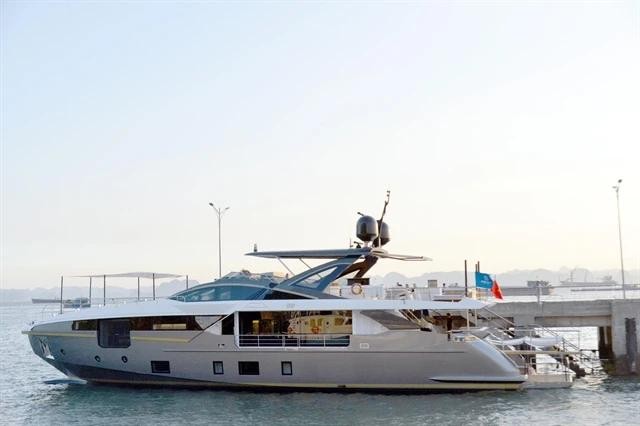
The proposal was written by a team of 41 members, led by Hoang Hong Giang, Deputy Director of the Vietnam Maritime Administration.
According to the proposal, the ministry will expand cooperation and joint ventures with international investors and brands to produce and supply high-quality, high-tech yachts, as well as to offer yachting services to the region and the world.
By the end of this year, the ministry will have reviewed and supplemented regulations on yacht management and develop a pilot scheme for managing operations.
This includes regulations on activity zones, docking areas for yachts, responsibilities of ship owners, crew members, captains, and passengers in yacht operations, as well as requirements for the boats operating in port waters and areas managed by maritime authorities.
From 2025 to 2030, the ministry will focus on institutional reforms in seven key areas of work.
It will add a definition of yachts in the Vietnamese Maritime Code and the Inland Waterway Traffic Law, develop a decree regulating the management of yacht operations in both maritime and inland waterways sectors, and review the planning of ports and docking areas.
It will also identify maritime areas and inland waterways where yachts with Vietnamese or foreign flags are allowed to operate, develop mechanisms and policies to encourage investment in the yacht industry and related services and add regulations on yacht port management and related service fees.
Finally, the ministry will consider reducing administrative procedures to ensure seamless entry and departure for yachts at seaports.
According to Nguyen Manh Hung, deputy chief executive officer of Ana Marina Nha Trang Joint Stock Company, Vietnam's yacht industry is still in its infancy.
Yachts began being imported into Vietnam by a few individuals in 2007-2008 but it was not until 2017 that Vietyatch – the country's first official yacht distributor – was established, Hung said.
"Now about ten companies are distributing genuine yachts in Vietnam, representing more than 40 brands," he said.
"The country has about 200 yachts in total, both old and new, including those that meet international standards. This number is too small compared to the region, the world, and the potential of the industry.”
Learning from other countries
Commenting on the proposal, Luu Van Duc, chief executive officer of Luu Gia Shipbuilding Company Limited, said that the port planning was in time to stimulate yacht tourism development.
While this type of tourism has significant potential, coordinated and continuous efforts are needed to create a favorable environment for its growth, he said.
“Yacht registration procedures should be similar to those currently applied to cars,” Duc said.
Nguyen Manh Hung from Ana Marina Nha Trang said that to attract international yachts to Vietnam, the proposal should outline a roadmap and solutions to address discrepancies between Vietnam’s and international yacht regulations and practices.
“International yacht management, including yacht classification and registration, should be studied carefully,” he said.
For example, in Hongkong (China), yacht operations are managed based on the results of inspections and the ship owner's needs, with certificates of ownership and operating licenses issued for limited periods, according to Hung.
In Singapore, yachts wishing to operate domestically are only granted operational licenses, not registration certificates, while yachts wishing to travel internationally are granted registration certificates, he added.
“There should also be further studies on international standards for crew qualifications and staffing levels,” Hung said.
For short-term management, he recommended the transport ministry to review, and adjust regulations on yacht registration, inspections, and crew qualifications and simplify certain administrative procedures.
For long-term solutions, the ministry should build a comprehensive legal framework that aligns Vietnam’s yacht industry with international practices to attract domestic and foreign investment, he said.
























